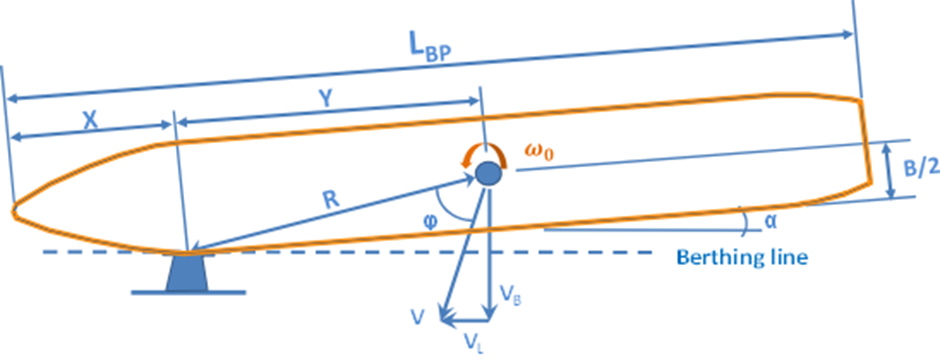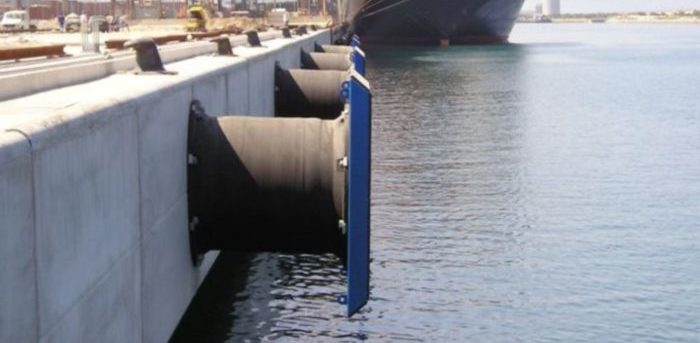Frederik Schmidt, Senior Claims Executive at the Skuld Club, in cooperation with Solis Marine Consultants, shared valuable loss prevention material with respect to fender damage, which constitutes a key aspect of unsafe berthing.
Many factors can contribute to an unsafe berth, but a common focus after any berthing incident is whether the fenders were safe and fit for their intended purpose at the material time. Fenders have a simple remit: they should prevent the immovable object (the berth) from succumbing to the irresistible force (of the ship) without damage to either.
Action points and evidence collection in case of an incident
After an incident the immediate and fundamental questions to ask include:
- What were the ship dynamics at the material time? Heading, course and speed over ground as well as draft, displacement, tide level and under keel clearance should all be logged and the data to substantiate this safely preserved.
- Were these parameters within the required operating limits for the berth? Were port entry and/or berthing guidelines easily accessible?
- Was the pilot advising the master conversant with these requirements? Did the master proactively seek this information or was it assumed that the pilot would highlight any deviations in time to take avoiding action?
- Did the selected fender(s) have sufficient absorption capacity? Whilst this task may fall to the visiting surveyor or suitable expert, the master can, to avoid vital evidence being potentially lost, assist by taking photographs and making sketches in the crucial post-incident period.
- Were the fenders and their supporting structure well maintained and in a good state of repair? A useful benchmark is the condition of adjacent fenders. The fenders at the extreme ends of a berth are used less often and will be the closest to a ‘new’ condition. Photographs showing variations in fender condition can be invaluable.
Prompt action to preserve data and information is paramount. The VDR data must be saved – it can be used to demonstrate the speed and characteristics of the ship during the berthing manoeuvre. Well lit, in focus and high-resolution photos, with reference points and a scale should be taken. These should include overview pictures and clear details of the damage from all safe angles. Steel and rubber samples can be taken to test the material grades and to compare rubber-degrading effects to build a fuller picture.
Prior damage is a key pointer to plausible causes or contributors. Are nearby fenders sagging and drooping? Is paint flaking off the steelwork or are there obvious signs of advanced corrosion? Are chains and connecting bolts all intact and in good condition, or are they slack, broken, pulling out or missing?
Important evidence can be lost in the hours and days after a berthing incident. Before expert help arrives, the master’s role is to safeguard this information. If the damage does not immediately warrant a site visit, then photographs, dimensioned diagrams and anything else of potential use should be collated – all essential for proper remote support and advice.
Background information on purpose and design
Over a service life of about 20 years a fender must retain the capacity to absorb that part of the kinetic energy imparted to it by a berthing ship. Another portion of the ship’s kinetic energy is dissipated (damped) during rotation of the ship about its fulcrum, the fender. It follows that if the kinetic energy of the berthing process is greater than these two components, all surplus kinetic energy will be converted into another and usually more destructive form – hull damage, broken fenders, bent piles or a toppled dolphin are just some examples.

In real-world situations, further factors such as currents, wind forces and complementary or opposite yaws induced from kicks of the engine (depending on the direction of propeller rotation) need to be taken into consideration. Also, human factors and equipment failure must be considered in the fender design.
Another role of the fender is to limit the movement of the vessel under or over the berth, protecting jetty piles, cranes and other superstructures. Most fender design codes and guidelines recommend berthing angles of up to 10 degrees at the moment of impact, sometimes more. Whilst a mariner or pilot might take professional pride in a parallel approach, they should have confidence that the fenders would still protect the structure in a sub-optimal approach. At the maximum design berthing angle, the fenders must have enough residual projection when compressed, the supporting piles must be set back sufficiently from the berth face, and cranes safely parked during berthing operations. In this way such hazards can be safely avoided.
The variety of vessels which may use the facility is commonly overlooked. For example, the largest Ultra Large Container Ship (ULCS) might dictate the size of a single fender, but it is feeder and intermediate size vessels which are at the greatest risk of squeezing between fenders and damaging a pile and the hull. There might be 50 or more smaller ships for every largest ‘design’ ship using a berth. Any one of these with an unusual feature like a belting or strake like those more commonly found on roll-on roll-off vessels, or a minimally protruding outlet pipe can snag a fender and cause substantial damage. This might lead to design compromises, but there should never be safety compromises at the ship to shore interface.
Sometimes the fender’s ‘factory fresh’ performance is considered without understanding the effect that the ambient temperature range, compression angles and gradual decay can have on that performance. Manufacturers publish energy and reaction values for their fenders, often with performance tolerances as small as ±10%. Every fender needs to perform to at least the minimum tolerance limit. Typically, just one or two units from an entire fender production batch are performance verification tested at the manufacturer’s factory, generally without a third-party witness.
Fender design, selection and performance verification calls for a high degree of skill and experience. Design checks must be carried out as they should be for all other parts of the berth structure, remaining mindful of the stark warning in British Standard BS6349: Part 4: 2014, one of the most widely used fender design codes, that “Users are responsible for its correct application. Compliance with a British Standard cannot confer immunity from legal obligations.”
Above article has been initially published in Skuld P&I Club’s website and is reproduced here with authors’ kind permission.
Skuld is grateful to Solis Marine Consultants for contributing to this article.
The views presented hereabove are only those of the author and not necessarily those of SAFETY4SEA and are for information sharing and discussion purposes only.
About Frederik Schmidt, Senior Claims Executive, Skuld Club
 Frederik Schmidt has been a Senior Claims Executive at the Skuld P&I Club since January 2017. He is a former Claims Executive and Claims Assistant at the Club. He is also a former lecturer of Marine Insurance at Hochschule Emden/Leer and has also been at the Legal Intern Shipping Team of Reed Smith LLP.
Frederik Schmidt has been a Senior Claims Executive at the Skuld P&I Club since January 2017. He is a former Claims Executive and Claims Assistant at the Club. He is also a former lecturer of Marine Insurance at Hochschule Emden/Leer and has also been at the Legal Intern Shipping Team of Reed Smith LLP.




























































